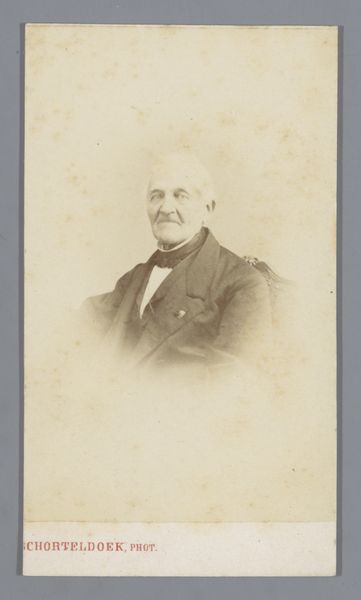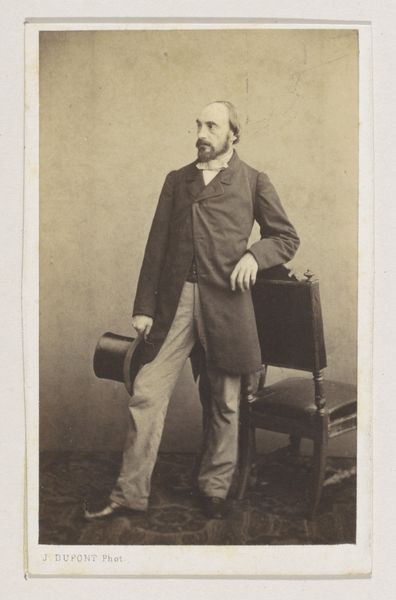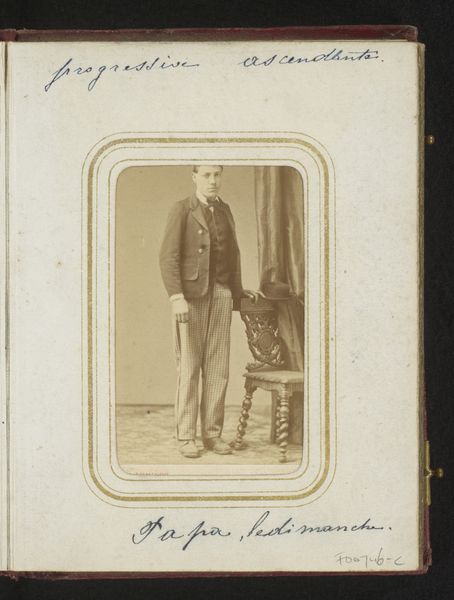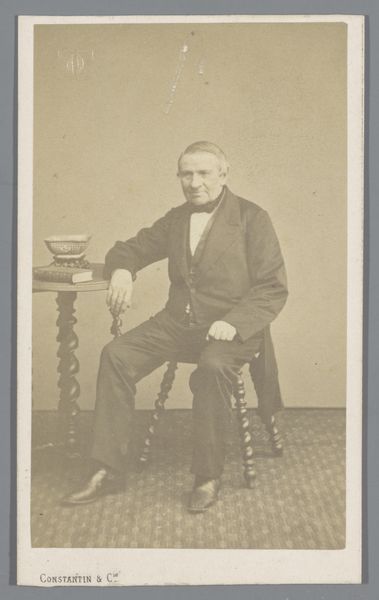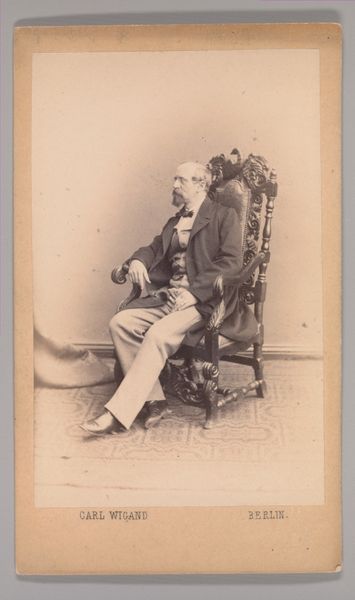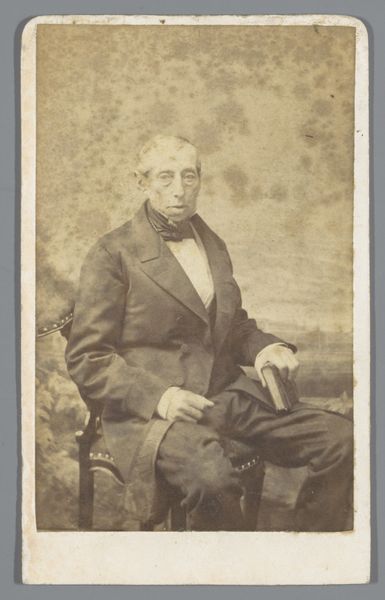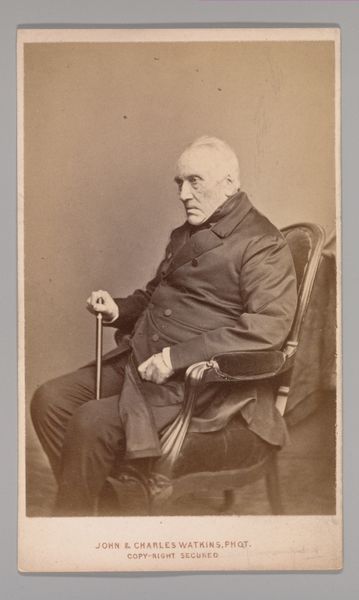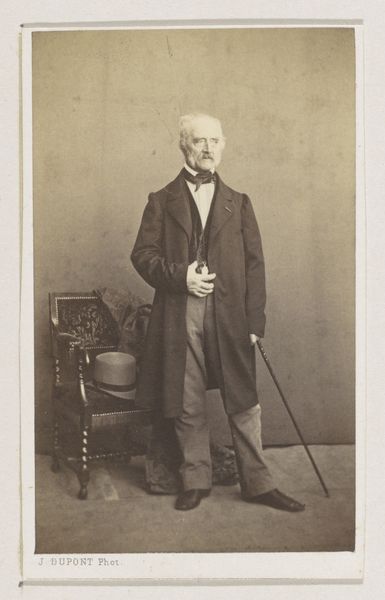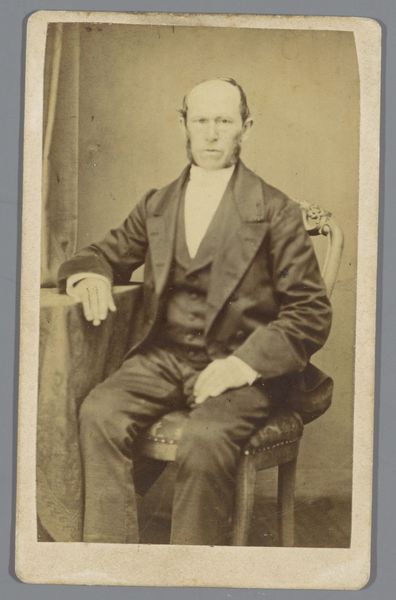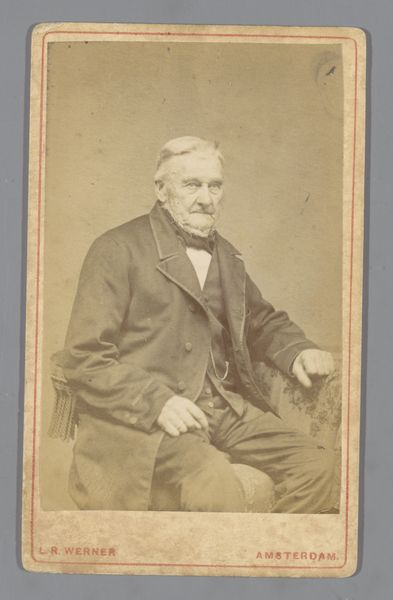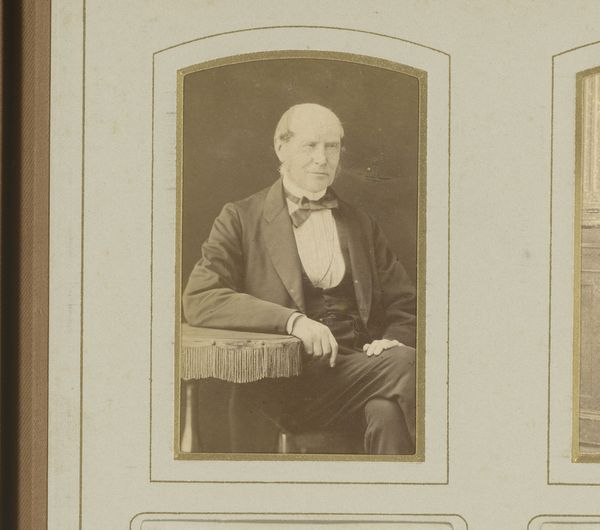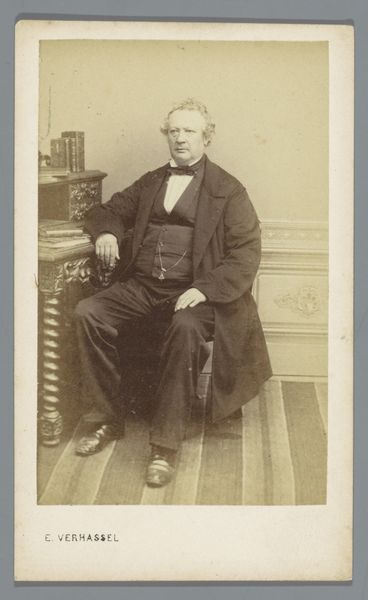
albumen-print, daguerreotype, photography, gelatin-silver-print
#
albumen-print
#
portrait
#
daguerreotype
#
photography
#
gelatin-silver-print
#
united-states
#
realism
Dimensions: 7 3/16 x 5 1/2 in. (18.26 x 13.97 cm) (image)
Copyright: Public Domain
Curator: Here we have a dignified portrait of Robert Bruel, a photograph taken by Jeremiah Gurney around 1850-1860. It's currently held at the Minneapolis Institute of Art. The process employed seems to be albumen print from a daguerreotype. Editor: He strikes me as very proper, almost…constricted. There’s a severity in his gaze. It could be simply the formal setting or the man himself but what message are we getting about 1850s masculine identity in America. Curator: Well, photographic portraits at this time served a very specific function within society. Think about how portraiture became democratized. Prior to this photography, paintings were mostly affordable for the elite. Photography made image-making a commercial and cultural enterprise that trickled down the class structure. These photographs were also presented like a carte de visite and were often collected within social circles. Editor: That is an interesting element, because photographs become extensions of visiting cards and further cemented the development and expansion of the United States through networks and capitalism. Yet there is a sense of privilege on display, don't you think? Even though more of society had access to portraiture than before, it was still far from universal access. What message about economic status and power are images such as this sending to those not included? Curator: Precisely. What's so interesting about Gurney's New York studio is how he made photography a lucrative enterprise, as this portrait surely exemplifies. He used it for political connections to generate revenue and popularity. Gurney really captured a sense of early capitalistic values within antebellum society. Editor: So, while the image provides insight into individual identity, we can also see the image's relationship to a broader societal narrative regarding status, economics and access. Curator: Absolutely, it invites us to consider photography’s public role and power in representing status at that moment in time. Editor: And it's a useful reminder that images carry complex social and political messages that we still engage with today.
Comments
No comments
Be the first to comment and join the conversation on the ultimate creative platform.
